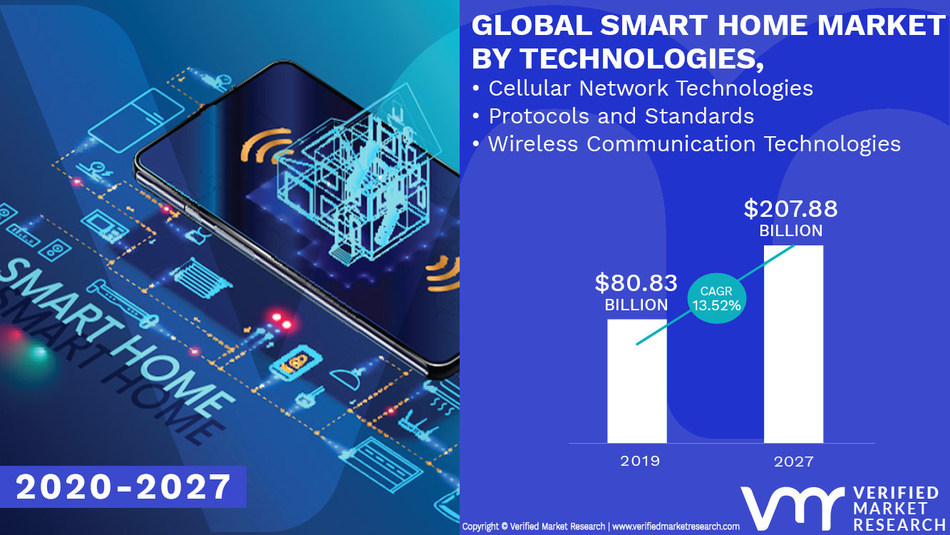
Smart Home Market Worth $ 207.88 Billion, Globally, by 2027 at 13.52% CAGR
A smart home refers to a convenient home setup where appliances and devices can be automatically controlled remotely from anywhere with an internet connection using a mobile or other networked device.
Verified Market Research recently published a new report, “Smart Home Market by Technologies.
According to Verified Market Research, the Global Smart Home Market was valued at USD 80.83 billion in 2019 and is projected to reach USD 207.88 billion by 2027, growing at a CAGR of 13.52% from 2020 to 2027.

Global Smart Home Market Overview
Increasing technological developments in various home appliances and equipment boost the growth of the smart home market. The growing importance of home monitoring systems for security issues is a key factor that is adding to the growth in demand for smart and connected homes.
The introduction of newly developed innovative wireless technologies like HVAC controllers, security, and access regulators is anticipated to boost market growth. The increasing trend of adoption of consumer durables and electronics is likely to provide new opportunities during the forecast period. Apart from households, many businesses are shifting their focus toward advanced technologies such as IoT. This is expected to provide new opportunities in the areas of lighting, HVAC, security, healthcare, and entertainment.
Some certain restraints and challenges will hinder the overall growth of the SmartHome market growth. The high cost of installation of smart devices and the threat of privacy concerns and cyberattacks might hinder overall growth at a global level.
Advantages and Disadvantages of Smart Homes
Pros
Installing a smart home technology system provides homeowners with convenience. Rather than controlling appliances, thermostats, lighting, and other features using different devices, homeowners can control them all using one device—usually a smartphone or tablet.
Since they’re connected to a portable device, users can get notifications and updates on issues in their homes. For instance, smart doorbells allow homeowners to see and communicate with people who come to their doors even when they’re not at home. Users can set and control the internal temperature, lighting, and appliances as well.
For the cost of setting up the smart system, homeowners can benefit from significant cost savings. Appliances and electronics can be used more efficiently, lowering energy costs.
Cons
While the smart home offers convenience and cost savings, there are still challenges. Security risks and bugs continue to plague makers and users of the technology. Adept hackers, for example, can gain access to a smart home’s internet-enabled appliances.
In October 2016, a botnet called Mirai infiltrated interconnected devices of DVRs, cameras, and routers to bring down a host of major websites through a denial of service attack, also known as a DDoS attack.
Measures to mitigate the risks of such attacks include protecting smart appliances and devices with a strong password, using encryption when available, and only connecting trusted devices to one’s network.
Some of the major players are Honeywell, Schneider, United Technologies Corporation, Johnson, Siemens, ABB, ASSA ABLOY, Ingersoll-Rand PLC, Legrand S.A., and GE.









